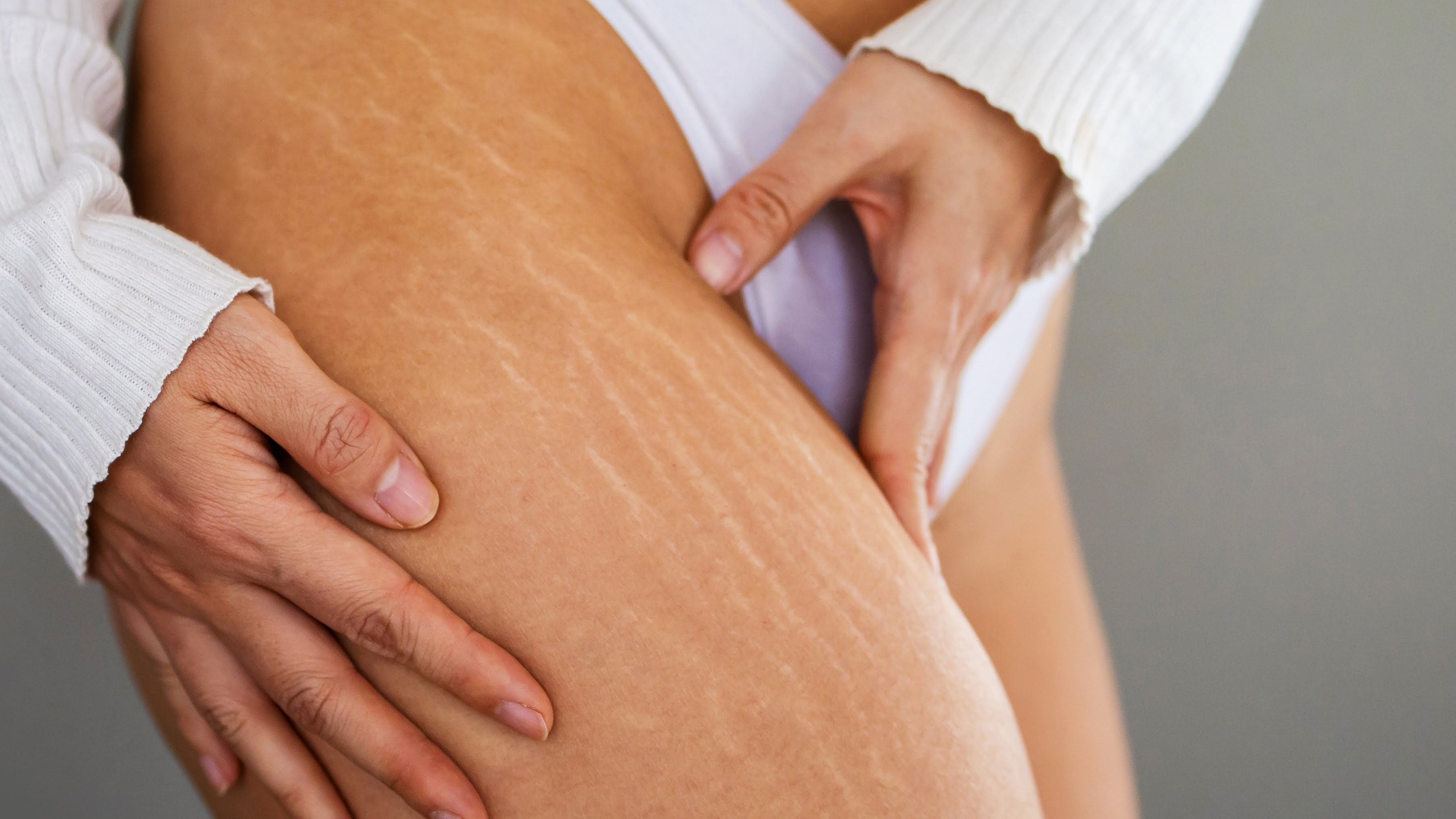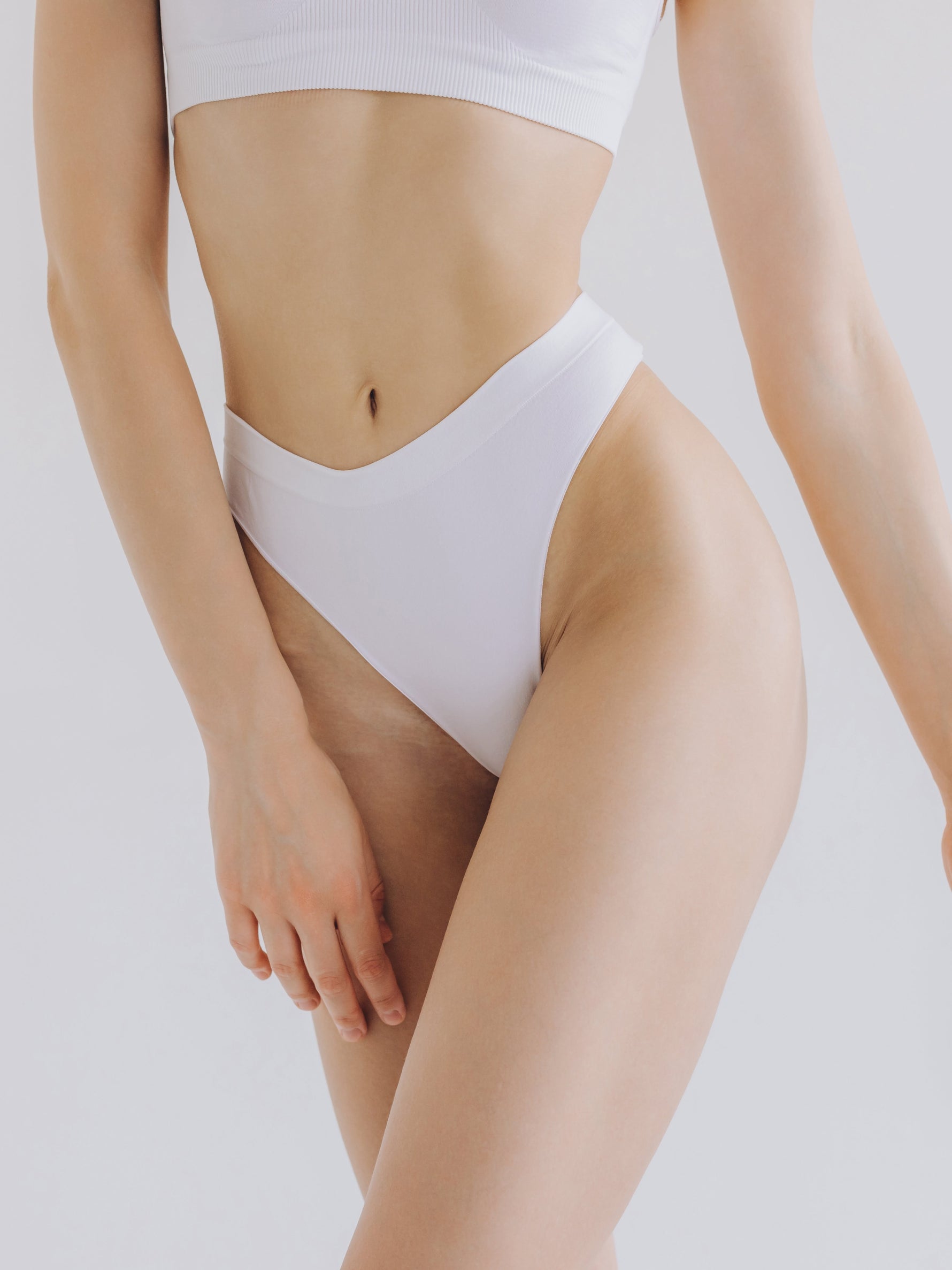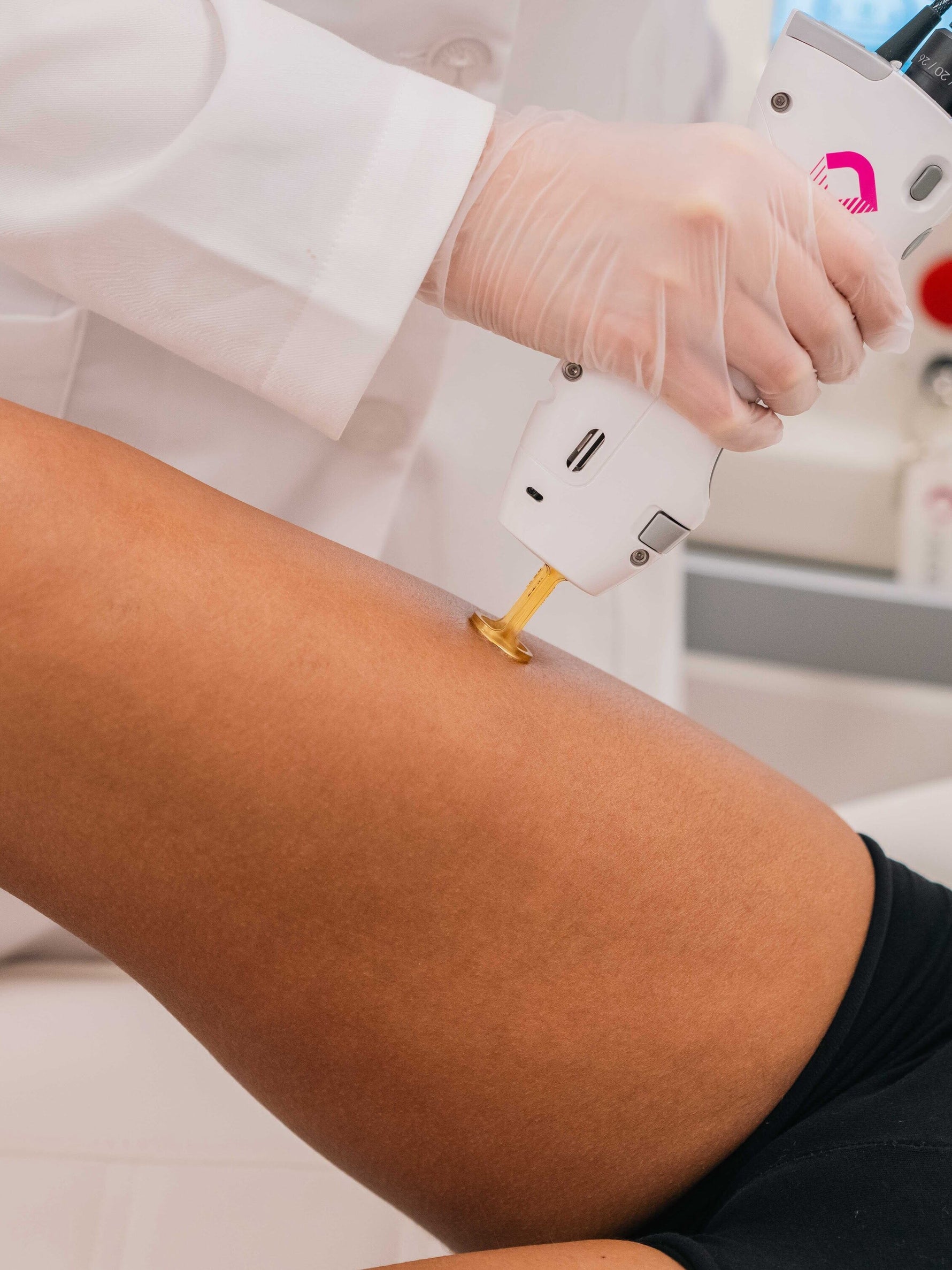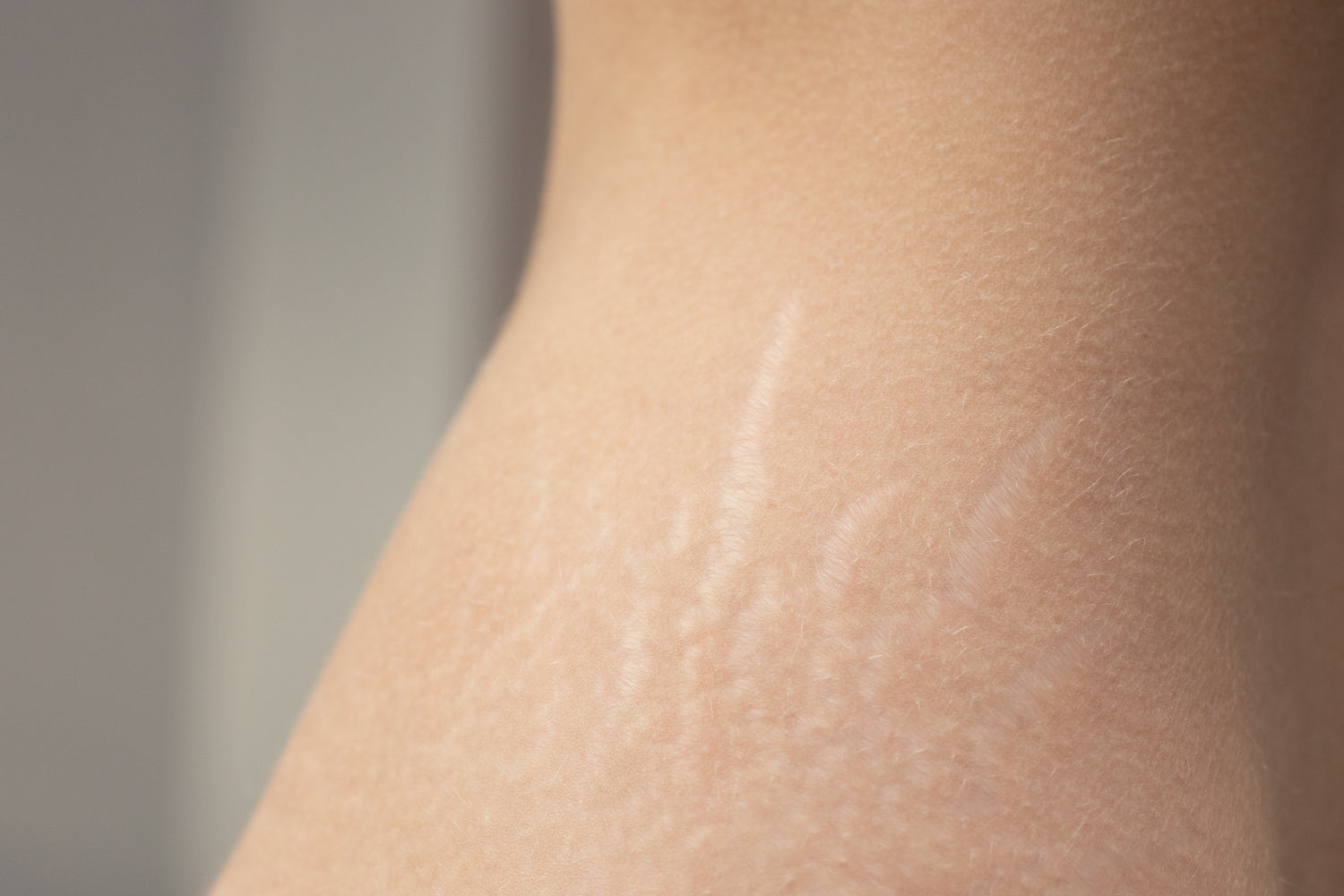
Restore the Surface
Stretch marks are long, thin lines or stripes that form on the skin’s surface, initially appearing as red or purple, and later maturing into a silvery-white tone. They occur when the skin is stretched beyond its natural elasticity, usually in a short period of time. While they can affect both men and women, they are more common in women.
These marks typically appear on areas of the body where the skin is more prone to stretching, such as the stomach, breasts, hips, thighs, lower back, and upper arms. Pregnancy is one of the most common causes, with over 50% of women experiencing stretch marks due to the rapid skin stretching during pregnancy.
Stretch marks can have an impact on body confidence, especially when they appear in visible areas. The good news is that stretch marks can be treated to reduce their appearance, helping you regain smoother, healthier-looking skin. At La Rose Clinic, we specialise in advanced treatments to improve the appearance of stretch marks, allowing you to feel confident in your skin once again.
Causes & Risk Factors
-
What Causes Stretch Marks?
Stretch marks are commonly caused by rapid changes in skin size, which can occur during pregnancy, weight gain, weight loss, or puberty. They form when the skin is stretched beyond its natural limits and is unable to return to its original shape.
-
Where Do Stretch Marks Form?
Stretch marks typically appear on areas of the body where the skin has undergone significant stretching. The most common places they develop include the stomach, breasts, hips, thighs, lower back, and upper arms.
-
What Are the Risks of Developing Stretch Marks?
Several factors can increase the likelihood of developing stretch marks, including:
- Genetics: A family history of stretch marks can make you more prone to developing them.
- Pregnancy: Over 50% of women experience stretch marks due to pregnancy, especially in the later stages.
- Weight Gain or Loss: Rapid weight fluctuations can cause the skin to stretch, resulting in stretch marks.
- Puberty: The rapid growth during puberty can stretch the skin and lead to stretch marks.
- Corticosteroid Use: Long-term use of corticosteroids can weaken the skin, increasing the likelihood of stretch marks.
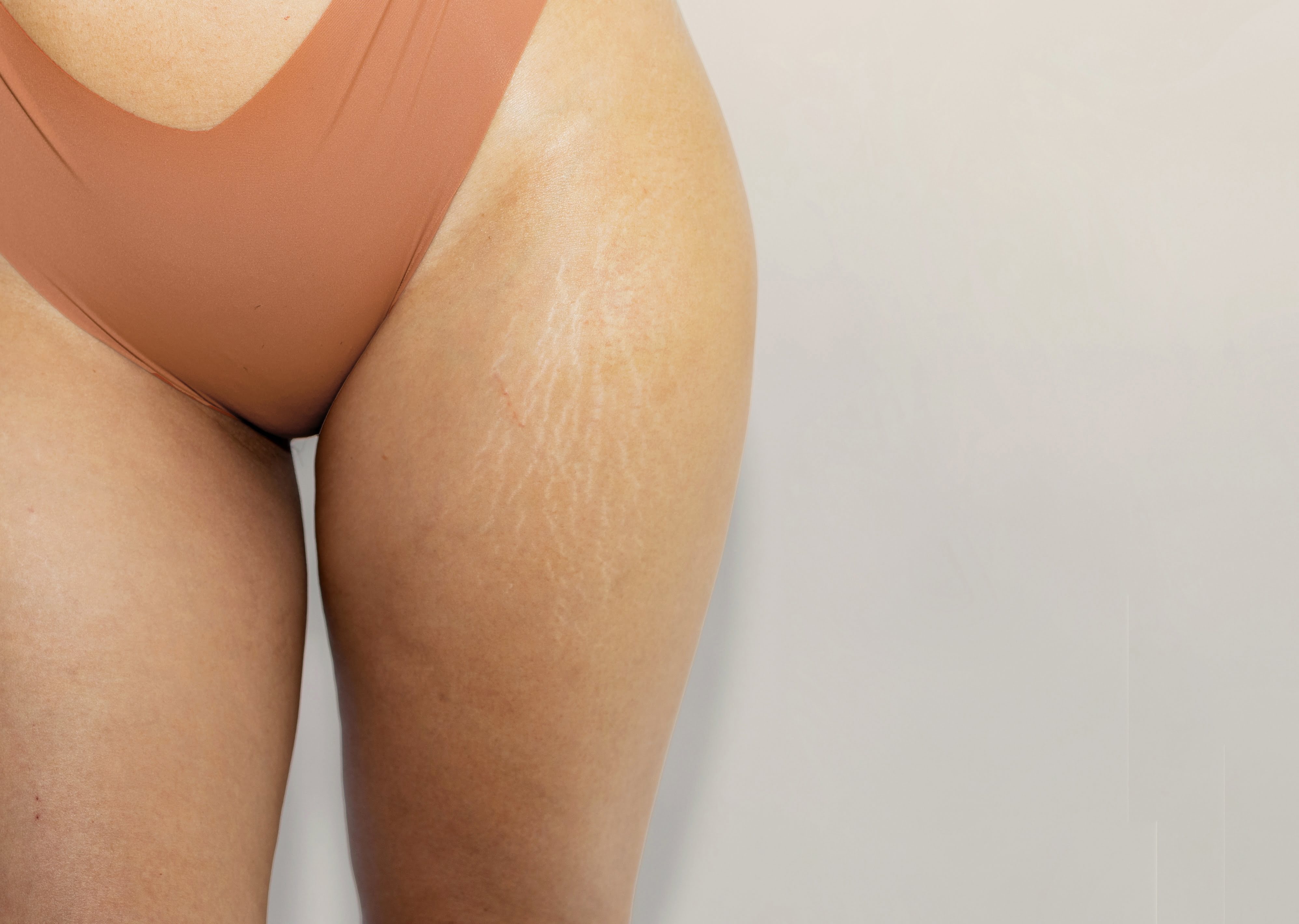


Treatment Options
-
Microneedling
Microneedling is a non-invasive treatment that stimulates collagen production by creating tiny, controlled micro-injuries in the skin. This process promotes skin regeneration, improves texture, and reduces the appearance of stretch marks. By boosting collagen and elastin, microneedling helps restore elasticity and firmness, making stretch marks less noticeable.
-
RF & Microneedling Body
Our RF & Microneedling Body treatment combines the benefits of radiofrequency (RF) and microneedling to target the deeper layers of the skin. The RF energy tightens and rejuvenates the skin, while microneedling enhances collagen production. This combination is particularly effective for treating stretch marks on larger areas of the body such as the stomach, thighs, or hips, resulting in smoother, firmer skin.
-
Chemical Peels
Chemical peels exfoliate the skin's surface, helping to improve skin tone and texture. This treatment removes dead skin cells and promotes new skin growth, reducing the visibility of stretch marks over time. By stimulating collagen production, chemical peels improve the skin’s overall appearance and contribute to a smoother, more even texture.
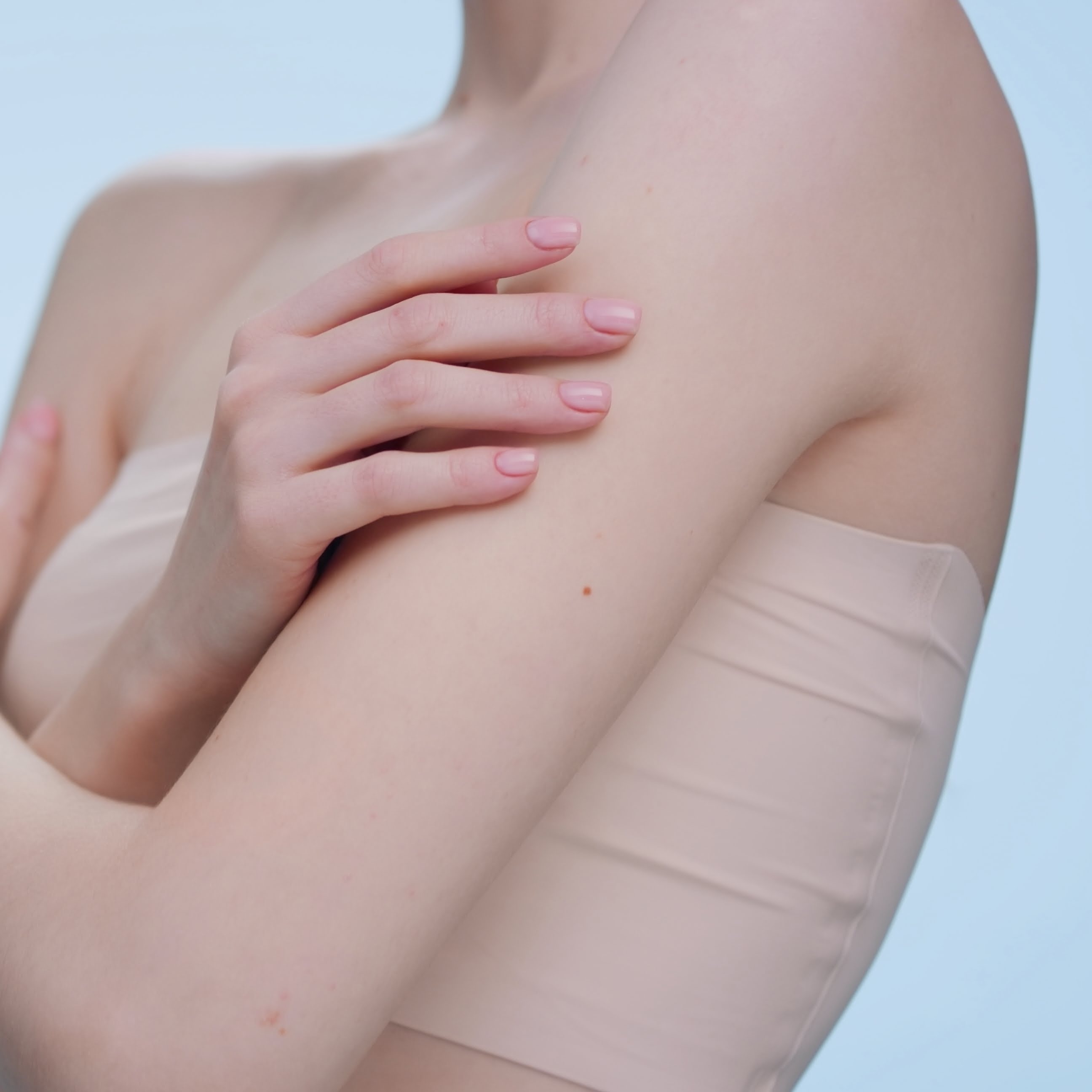


Real Results
After
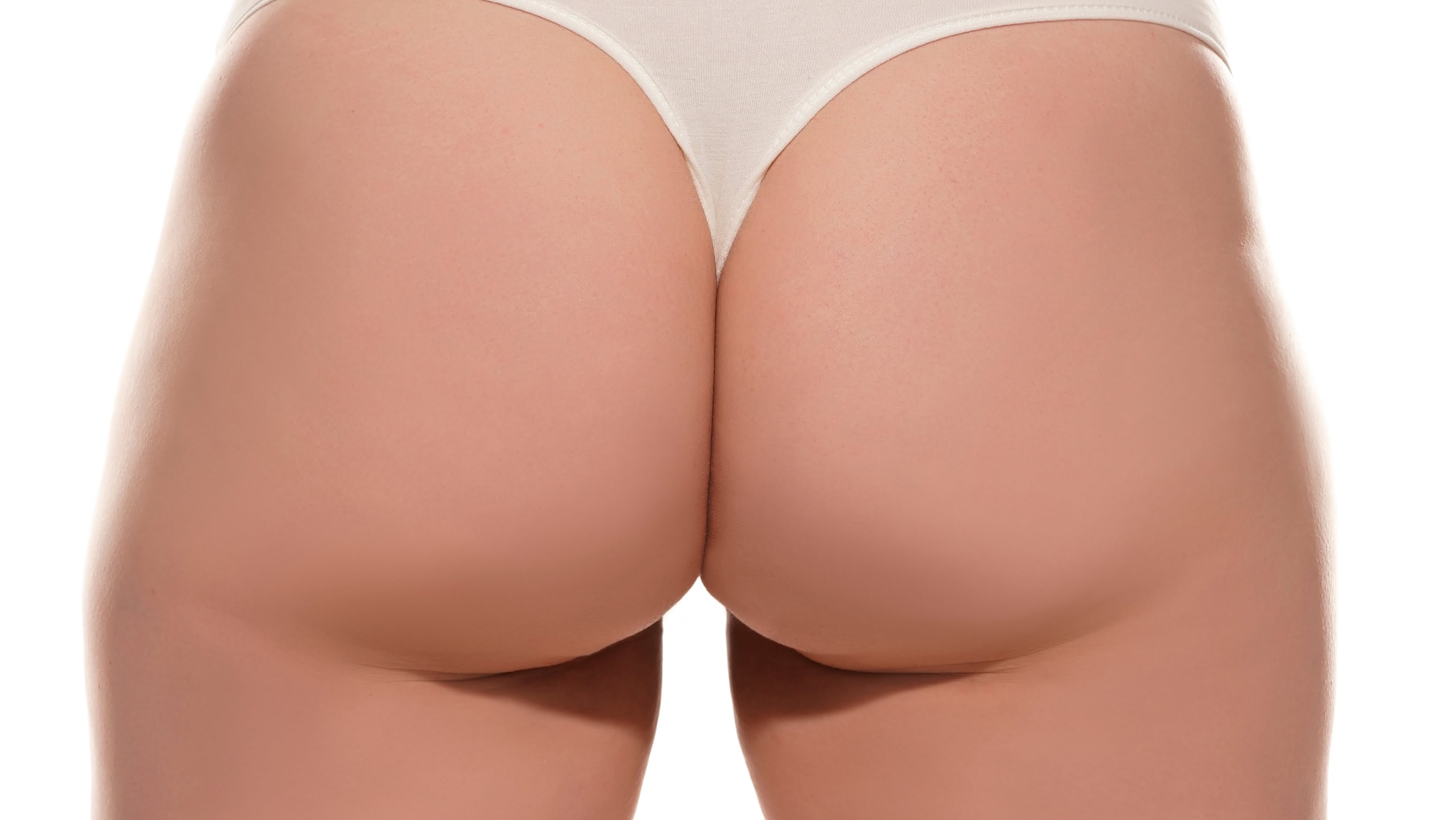
Before
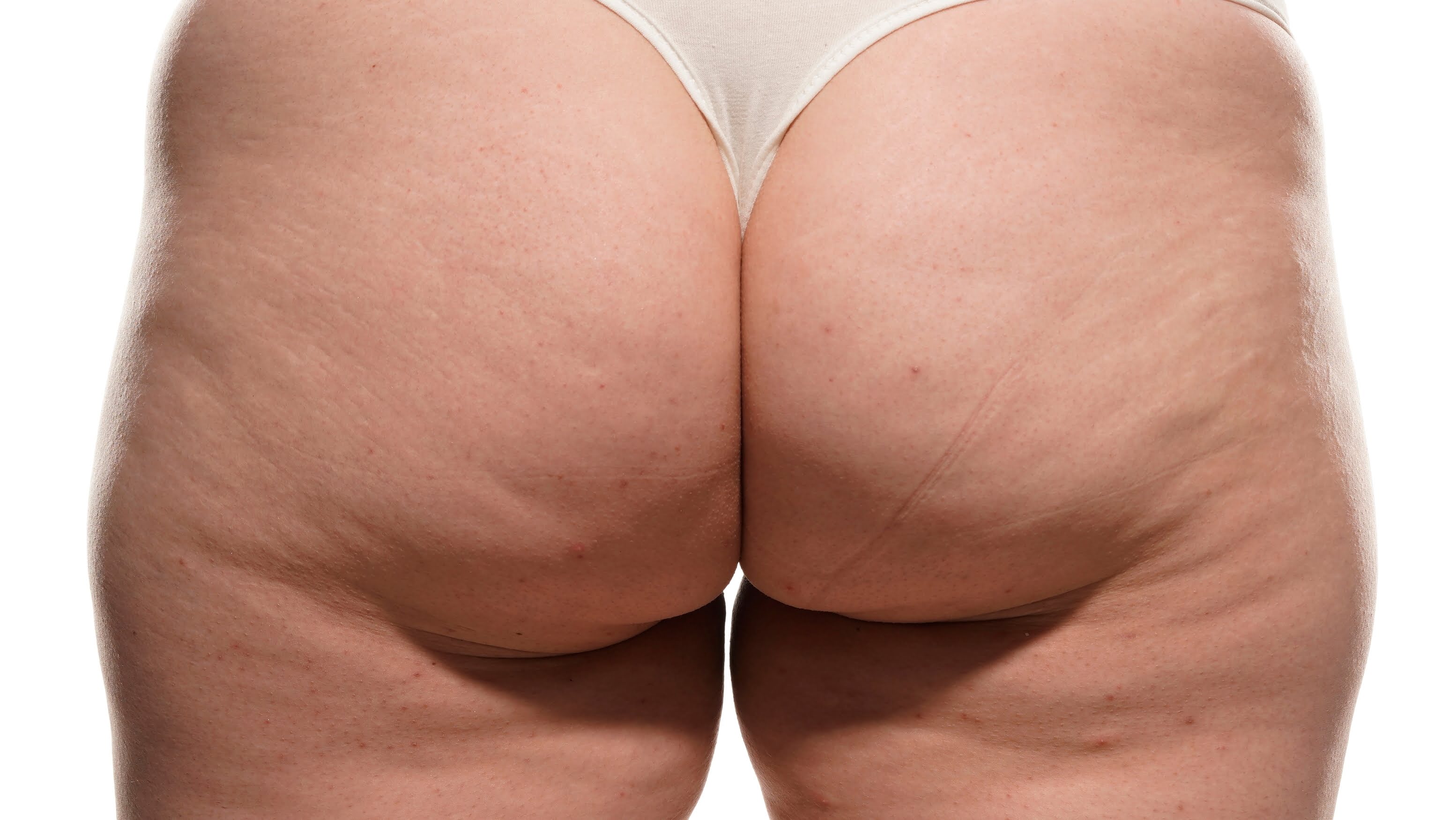
La Rose Clinic Difference
What makes us different from other clinics
